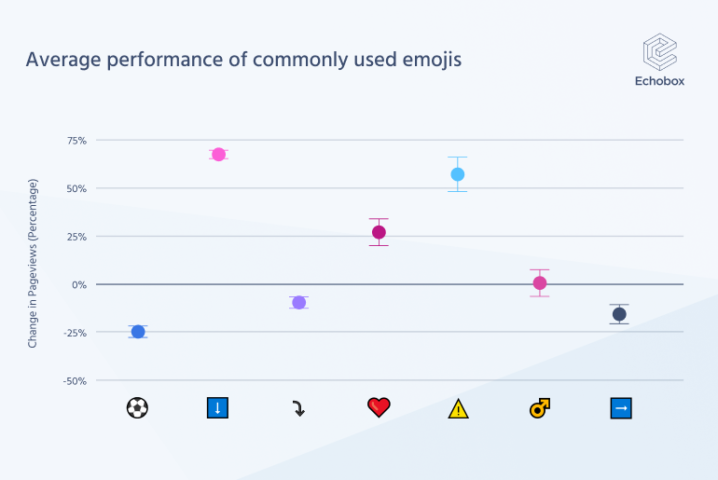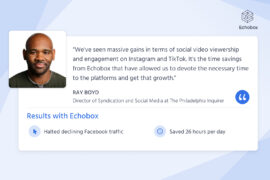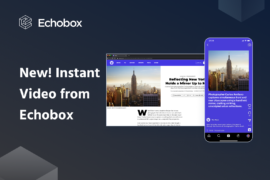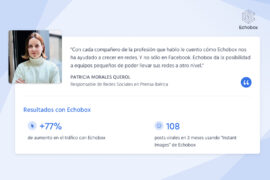Increasing engagement on Facebook is an important metric for many social media teams. But how can social media teams use emojis for marketing on the platform to improve performance?
Emojis are divisive — slated for dumbing-down language, or hyped as the next frontier in communication. Either way, businesses are incorporating emojis into their social media strategies to reflect how people communicate on the internet. Like them or not, emojis are here to stay, and their number keeps growing.
At Echobox, we took note and asked ourselves a simple question: Does including emojis in Facebook share messages actually increase referral traffic and engagement? We had our data science team take a look, and, as is often the case with simple questions, the answer is more complex than you may have thought.

In this article, we’ll look at how to use emojis on Facebook and take you through 4 key recommendations from our emoji white paper. If you’ve ever wondered whether your share messages should contain emojis, read on!
1) Does using emojis for marketing boost Facebook engagement? Yes👍…
There aren’t many studies on the subject of emojis in marketing material and its impact on engagement, and many use small data sets of only English-language posts. We thought the topic deserved a little more rigor. We grouped together and analyzed every Facebook post over 6 months from 1,000 businesses (all Echobox customers) in 8 languages. Added together, this means that we analyzed around 5 million posts, of which around 6% used at least one emoji.
What we found was clear: Posts including at least one emoji perform significantly better, achieving 29% more pageviews than those without. We’d say that’s a pretty good reason to include emojis in your posts. But, before you fill your Facebook page with them, there are a few other aspects to consider. For example, when it comes to using emojis on Facebook, is there such a thing as too many?
2) …but, don’t use too many👎.
When we looked at the numbers, we discovered that there’s a law of diminishing returns. In fact, a single emoji was the optimum number, with the benefits tailing off from there. This could be because emojis add another visual facet to a piece of text. Consider them a design language. Too many elements confuse the eye and detract from the message you are trying to put across. When it comes to emojis, our data shows that less is very much more.
3) Which emojis work best for engagement 🤔?
Including an emoji is a good idea when social media teams post on Facebook. But our study dug a little deeper and threw up some surprising results.
If you already include emojis in your share messages, ask yourself this question: why? Intuitively, the answer seems fairly simple: Emojis are a great way of connecting emotionally with your audience and marketing your content and your business.
So, your share messages need more smiley faces, right? Well, take a look at this…
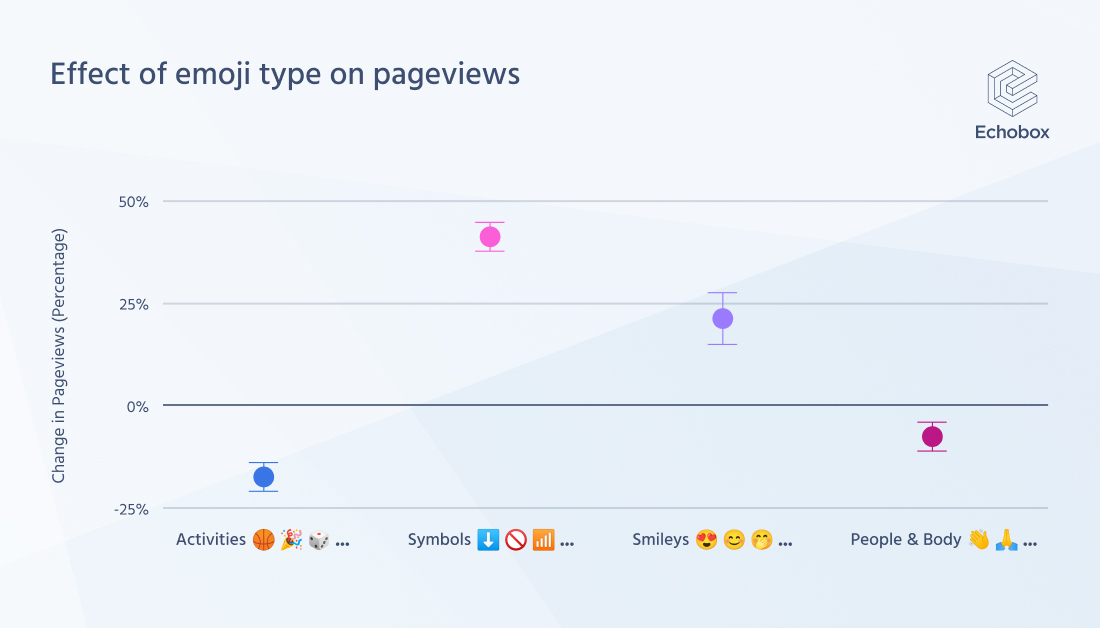
We grouped the most commonly used emojis into 4 separate categories and looked at the pageviews resulting from posts including these emojis. Interestingly, although smiley emojis are pretty effective at generating engagement, as a group they’re nowhere near as effective as symbols. This is not to say that all symbols are the same. In fact, even within groups there are significant differences in performance.
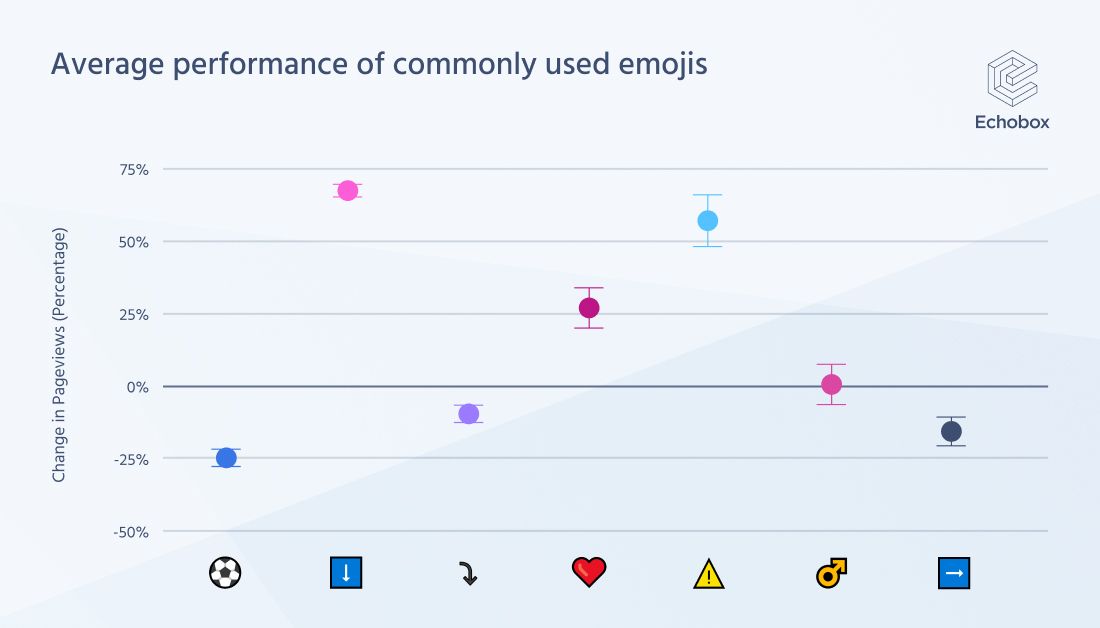
We looked at the 7 most commonly used emojis within the millions of posts we analyzed, and the downward blue arrow (⬇️) produced significantly better results than the others studied, including the downward-curved arrow (↷) which actually produced a negative result. It could be that the use of color offers a more appealing, eye-catching visual, which would also partially explain the strong showing for both the red love heart (❤) and the bright yellow warning sign (⚠️). As for the poor performance of the right-pointing blue arrow (➡️), this might be because it is less likely to direct the reader to carry out a specific action like ‘click here!’, but deeper analysis would be required to confirm this hypothesis.
4) And where should I put the emojis 🧐?
Our research revealed that the best place to put an emoji, by far, is at the end of your share messages. Perhaps this has to do with the smiley’s ubiquity: As more businesses include them they become less useful in distinguishing your brand’s voice from your competitors’. But using a symbol at the end of your share message is a great way of describing content or giving the reader a clear direction for what action you want them to take.
So, let’s recap. How should you use emojis for marketing to boost engagement on Facebook?
- Using emojis for marketing on Facebook is a great way to increase engagement. Generally speaking, using emojis is better than not using them.
- Be sparing and don’t crowd your post. 1 emoji is best.
- As a category, symbol emojis perform best. But even within that group some emojis such as the downward blue arrow (⬇️) have a bigger impact on increasing engagement than others.
- Put the emoji at the end. Let it punctuate your post rather than lead it.
